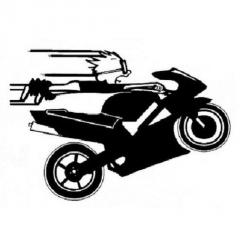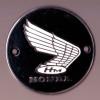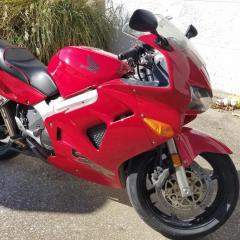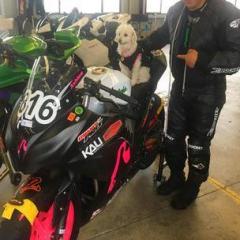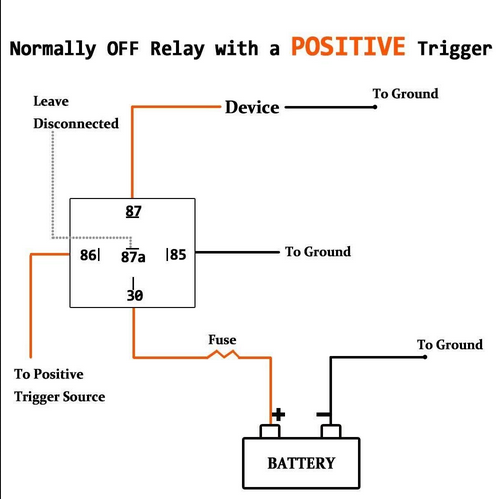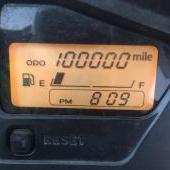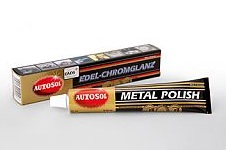Leaderboard
Popular Content
Showing content with the highest reputation on 11/14/2020 in all areas
-
Haven't been around in a while. Sold my mint 2001 years ago and bought a Diavel. Lately, I've been searching for a perfect 2000. Something to could just cruise on. The Ducati is awesome, but sometimes I just want to take it easy. Getting older I guess. Ive passed on multiple "clean" ones. It's amazing what people think "mint" is. After a year or so of searching, I finally found one. No shit, 2800 original miles. Everything, and I mean everything is there. The only thing that I could find missing was the rubber frame plug for the idle adjustment. Tires, brakes, oil, coolant, brake fluid, all original. Unfortunately, it looked like it was never cleaned. Lots of oxidation on the aluminum parts, and surface rust on steel parts. Chain was almost rusted solid! I've slowly been flushing all the fluids, and cleaning it up. So far, it's coming out great. I probably won't register it this year, so I have nothing but time. Great to be back. This will be my 4th VFR in the past 25 years. This one stays though!1 point
-
1 point
-
Hiya Skids Helpful facts to ponder... auto oilers lube only the external roller and between the roller and the sprockets (red area in my drawing)... they do not lube the X rings nor behind the X rings so any oil applied in that effort is wasted fling off... The running oil leak lowers the operating temp where the factory installed grease has a chance to live longer before the first adjustment... but the fact remains adjustment is taking up the slack cause by metal to metal wear at the critical pin and roller junction because the factory installed grease is beginning to fail... you can submerge the chain into a sea of oil and not one molecule will migrate pass the effective X ring seals to reverse this metal to metal wear... What we are lubing are external roller and between the roller and the sprockets (red area in my drawing)... we are not lubing the X rings nor behind the X rings so any oil applied in that effort is a waste and will only fling off... I recommend Motul Chain Paste... squeeze the white grease from the tube and load the brush... Hold the loaded brush to the inside of the chain rollers to transfer the white grease... After a couple of spins of the chain it's lubed like from the Factory... Motul Chain Paste clings with no flings...1 point
-
So rode a bunch back before marriage/klds. Favorite ride back then was a kz1000j that I rode the hell out of. My wife has been uber supportive and I found this lovely gem. a 1998 VFR with 13K miles, vfrness installed, sargent seat, heated grips, new pirellei diablo 2's for only 2K. I jumped on it and 500 miles already logged on it I'm over the moon happy with it. The engine runs like it's new. Anyhoo i always wanted a 5th gen vfr and happy to join the club 😉1 point
-
Picking the bike up next Friday Pretty hyped 🙂 The ECU is fitted underneath the tank i assume? Have already been in contact with Sabsteef ECU tuning (Stefan) and plan to do the remote tuning to get rid of the power restrictions etc.1 point
-
BTW - this is special relay that apparently has some circuitry inside that keeps it ON between grounding pulses from ignitor. Probably a capacitor & diode inside to keep it engaged just long enough for next ignition pulse to come along. What's this jumper you made do? Does it bypass relay and just bridges black to black/blue wire on relay-connector and powers pump any time run-switch is ON? Here's some simple quick tests with multimeter. Remove relay from connector: 1. key ON, run-switch ON, measure voltage at black wire going into relay connector. What is voltage? Test relay, use test-leads with alligator clips: 2. connect +12v to black terminal on relay 3. connect ground to red/yellow terminal on relay 4. measure voltage at black/blue wire terminal on relay. What is voltage?1 point
-
Lol, now that's just funny... This is the most conceited shit I have heard in a long time. You're basically saying your uninspired vision for the bike is for them to all stay stock forever. Doesn't matter who owns it nor how they want to use the bike, how they like it to look, how they want to dump excessive money into modding it to become their dream machine. I chose this platform as a huge personal project instead of just flipping it. As mentioned previously, I did extensive research into the bike once I realized it had a uniqueness to it. Yes I was only initially interested because it was a cheap find. It is quite far from a good condition museum piece and more in the 'forgotten 30 year old metal' category. I'll post some more close ups of the bike so maybe that'll put some you at ease for me 'ruining a perfect 30 year old design.' I do agree that, for it's age, the style isn't too bad. But this is not what I would consider the most attractive stock bike. We'll see how you feel about a machine after you put your blood, sweat, tears and cash into a project. Tell me you wouldn't have a special place for it over something you bought and just maintained. Go build something. And if nothing else, I'm doing the community a favor by offering parts to those that want to keep their bikes stock. As for the off road comments, you're right, this isn't an off road bike. If you actually look up the tires I already ordered, you'll see that they are mainly a street tire. 90/10 street/dirt. It's still rated for 130 mph which is faster than any of us should be going unless we're tracking the bike which is already stupid because the bike is so heavy. I chose the Shinko 705 instead of the 805, but here in Colorado, I don't want to avoid these sweet mountain roads/trails so I need a tire that isn't a slick. Even the 805s have some insane street performance. I have them on my KLR650 and love them. Cheap and phenomenal grip on and off road, only downside is that they wear out fast... but they're cheap. Buying the 705s was a sacrifice I debated for a while. I spent like 5 hours actively researching tires and their performance in different environments. I love the sleek exhaust and how it shows off the rear wheel. I don't know exactly how I'll design it but I've seem some interesting creations, like this custom box: https://youtu.be/acFyVCPJMBk?t=69 Just to piss more people off, here's a very short story. I'm an IT System Administrator, aka computer nerd, by day. Well, I received two free Macs that ran slow as hell. This is because Apple sabatages their machines by pushing updates to their machines that can't run it well and their OS is quite heavy. These Macs were slow as hell, so I violated their purity, added SSDs, 2TB 2.5" drives and put Linux on them. Boom, now they run faster than ever (because Linux > MacOS) and the Macs are usable again. You might say "just don't update the Mac" but Apple shit gets outdated FAST and won't allow you to install the latest web browsers or other apps very quickly, effectively forcing people to buy their newest hardware which is ridiculously overpriced for the hardware they put in them.1 point
-
Also the Service Manual doesn't offer much in the way of description. It just offers a continuity and voltage check of the three wires to the relay. Its operation though is to simply disable the fuel pump if the engine is not running.1 point
-
The gas companies pitch that the higher the octane the better it burns The rule is don't buy more octane than you need. Octane is one formula in the alkane series of hydrocarbons. Made up of 8 carbon atoms singled bonded together with 18 hydrogen atoms connected. Although octane is a simple organic compound, it was some what expensive to Crack and supply in large quantities. so todays gas has no real octane. What we use is an octane rating system. The properties of this formula is that it burns slow when ignited; therefore it does not detonate or knock during heavy loading of the engine. Knocking is an explosive combustion of part of the fuel/air cylinder charge, after burning begins. What the ear hears is the shock waves of the normal flame pattern colliding with the detonated fuel/air mixture. Engine temperature will begin a steady rise and micro particles of the piston will eaten away. Looking at a piston that suffered knocking it looks as if the surface as been pitted by sand blasted When the cooling system Maxim heat capacity is reached, beyond that,around 300 F, metal to metal contact damage has probably occurred. The oil companies used the next lowered alkane formula Heptane which can be refined in large quantities. Heptane's big drawback is that it burns too fast when ignited and would knock continuously under load. To slow done the burning process additives are added instead of deadly lead. Back in the 60s lead was added to the formula about 1 grams per gallon like leaded premium, Union Oil 76 which had an octane rating of 98 with only about 1 gram of lead per gallon. If you have an old 427 Hemispherical combustion chamber engine you add lead and reach a 3 gram per gallon , or about a 100 octane rating. High performance engines like the VFR employ pentroof shaped combustion chamber. This shape promotes rapid flame patterns, all in right direction, so the killer knock is restricted to light knocking at sea level under sever loading. Most of us can get great service from unleaded regular or about 87 octane rating... Things to check for that would effect cold starting are: 1) coke cable adjustment... too loose or too tight effects range... 2) unobstructed idle air tubes... pinched rubber tubes from the air box restrict idle air... the result is a lean mixture that doesn't support 100% combustion... 3) throttle body butterflies... any air that bleeds past the butterflies kills vacuum needed to draw in the correct rate of fuel... the result is a lean mixture that doesn't support 100% combustion... If evreything is right you should be able to use full choke... no throttle... hit start and it fires up and idles...1 point
-
That's all good stuff Cogswell but isn't FromMaine referring to the Fuel Cut Relay on a 4gen? Looking at the circuit diagram this is a special 3 pin relay that is energized by ignition pulses, then sends power to the Fuel Pump. So it doesn't appear to be the normal relay coil arrangement, possibly electronic! Not too sure how you would test this relay outside of the bike. I believe some 4gen owners just link the relay out and don't bother with it! Sorry, I have no experience with a 4gen.1 point
-
Relays can seem like a bit of black magic - but they're basically an electrically actuated switch. I try to think of them as a normal rocker switch (could also be the ignition switch) with a coil that activates the rocker instead of your hand. In the diagram below (plenty on line with a search), the numbering of the terminals is pretty typical, though from Japan it could be different. Power from a switch (like a headlight switch) comes across terminals 86/85. When that happens, the switch inside the relay is electrically triggered (closed) providing usually an audible "click", and then with the switch closed power flows across 30/87 to the load ("Device"), in the example headlights (or in your case, fuel pump) to ground. To test it, place 12v across 85/86, see if there's a "click", and then using the meter see if the 30/87 has continuity. As long as your meter has clips to attach to the terminals you should be able hold jumper wires to the power source and ground. A Japanese sourced relay may not have the same terminal numbering, but the concept is the same. You can check it installed on the bike by backprobing the terminals (a paper clip works for that), but be careful that you know which terminal is which - you don't want to jump the wrong pair. In the diagram, below, terminal 30 always has power to it, so that's also good to check before deciding the relay is bad. Relays are pretty reliable, though they can get sticky with age - sometimes a tap on them will make them work. Something else to consider is that possibly your original relay is still good - check it, too - and by bypassing it to the fuel pump you are possibly unknowingly bypassing a fault further down the circuit beyond the relay. In other words, the relay is sending power to the pump, but something between the relay and the pump is faulty. In the diagram it would be a fault between "87" and "Device". Since the pump runs by jumping it, it seems reasonable that it's grounded properly. That's probably clear as mud, but I hope it helps.1 point
-
Correct. Without any vacuum applied to the diaphragm it is spring loaded to the open position. When the control solenoid is energized it allows vacuum to act on the diaphragm pulling the flapper to the closed position. The other option is to simply pull the vacuum hose off the flapper diaphragm and plug/seal the vacuum hose. The flapper will be fully open. I've used the end of a drill just the right size to plug the hose in the past. Guess what you're trying to isolate is either a noisy diaphragm or a noisy solenoid. Just for info - I've removed all the hardware of this system on my 8gen mainly to just free up space under the fuel tank. Honda has also removed this system from the 2017 8gen. My bike has been running fine (subjectively) in all aspects since removing it some 25,000kms ago. Cheers and let's know what you find.1 point
-
I sold my 6th gen. two weeks ago. Ending odometer reading was 101,012. 🙂1 point
-
Mate. That looks Great. I've always liked the OEM bronze but the black with red trim tape looks very smart love it. Here's a tip....buy yourself a tube of Autosol Metal Polish and polish up the nice nickel chrome exhaust just under your right footpeg, it does a great job. Here's my bike and after 76,000k pipe looks like new. Cheers.1 point


